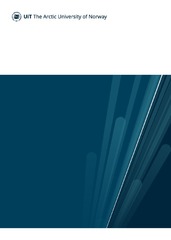Blar i forfatter "Boayue, Nya Mehnwolo"
-
Blinding is compromised for transcranial direct current stimulation at 1 mA for 20 min in young healthy adults
Turi, Zsolt; Csifcsak, Gabor; Boayue, Nya Mehnwolo; Aslaksen, Per M; Antal, Andrea; Paulus, Walter; Groot, Josephine; Hawkins, Guy E.; Opitz, Alexander; Thielscher, Axel; Mittner, Matthias (Journal article; Tidsskriftartikkel; Peer reviewed, 2019-03-19)Transcranial direct current stimulation (tDCS) is a non‐invasive brain stimulation method that is frequently used to study cortical excitability changes and their impact on cognitive functions in humans. While most stimulators are capable of operating in double‐blind mode, the amount of discomfort experienced during tDCS may break blinding. Therefore, specifically designed sham stimulation protocols ... -
Commentary: Transcranial stimulation of the frontal lobes increases propensity of mind-wandering without changing meta-awareness
Csifcsák, Gábor; Boayue, Nya Mehnwolo; Aslaksen, Per M; Turi, Zsolt; Antal, Andrea; Groot, Josephine; Hawkins, Guy E.; Forstmann, Birte U.; Opitz, Alexander; Thielscher, Axel; Mittner, Matthias (Journal article; Tidsskriftartikkel; Peer reviewed, 2019-02-05)A Commentary on <p> <p>Transcranial stimulation of the frontal lobes increases propensity of mind-wandering without changing meta-awareness<p> <p>by Axelrod, V., Zhu, X., & Qui, J. (2018). <i>Scientific Reports</i>, 8:15975. doi: 10.1038/s41598-018-34098-z -
Effects of transcranial direct current stimulation for treating depression: A modeling study
Csifcsak, Gabor; Boayue, Nya Mehnwolo; Puonti, Oula; Thielscher, Axel; Mittner, Matthias (Journal article; Tidsskriftartikkel; Peer reviewed, 2018-02-28)<p><i>Background</i>: Transcranial direct current stimulation (tDCS) above the left dorsolateral prefrontal cortex (lDLPFC) has been widely used to improve symptoms of major depressive disorder (MDD). However, the effects of different stimulation protocols in the entire frontal lobe have not been investigated in a large sample including patient data.</p> <p><i>Methods</i>: We used 38 head ... -
Head models of healthy and depressed adults for simulating the electric fields of non-invasive electric brain stimulation [version 2; referees: 2 approved]
Boayue, Nya Mehnwolo; Csifcsak, Gabor; Puonti, Oula; Thielscher, Axel; Mittner, Matthias (Journal article; Tidsskriftartikkel; Peer reviewed, 2018-06-06)During the past decade, it became clear that the electric field elicited by non-invasive brain stimulation (NIBS) techniques such as transcranial direct current stimulation (tDCS) and transcranial magnetic stimulation (TMS) are substantially influenced by variations in individual head and brain anatomy. In addition to structural variations in the healthy, several psychiatric disorders are characterized ... -
High-Definition Transcranial Direct Current Stimulation Improves Delayed Memory in Alzheimer’s Disease Patients: A Pilot Study Using Computational Modeling to Optimize Electrode Position
Rasmussen, Ingrid Daae; Boayue, Nya Mehnwolo; Mittner, Matthias; Bystad, Martin Kragnes; Grønli, Ole Kristian; Vangberg, Torgil Riise; Csifcsak, Gabor; Aslaksen, Per M. (Journal article; Tidsskriftartikkel; Peer reviewed, 2021-09-14)Background: The optimal stimulation parameters when using transcranial direct current stimulation (tDCS) to improve memory performance in patients with Alzheimer’s disease (AD) are lacking. In healthy individuals, inter-individual differences in brain anatomy significantly influence current distribution during tDCS, an effect that might be aggravated by variations in cortical atrophy in AD ... -
Increasing propensity to mind‐wander by transcranial direct current stimulation? A registered report
Boayue, Nya Mehnwolo; Csifcsak, Gabor; Aslaksen, Per M; Turi, Zsolt; Antal, Andrea; Groot, Josephine Maria; Hawkins, Guy E.; Forstmann, Birte U.; Opitz, Alexander; Thielscher, Axel; Mittner, Matthias (Journal article; Tidsskriftartikkel, 2019-01-24)Transcranial direct current stimulation (tDCS) has been proposed to be able to modulate different cognitive functions. However, recent meta‐analyses conclude that its efficacy is still in question. Recently, an increase in subjects’ propensity to mind‐wander has been reported as a consequence of anodal stimulation of the left dorsolateral prefrontal cortex (Axelrod et al., Proceedings of the National ... -
The interplay between executive control, behavioral variability and mind wandering: Insights from a high-definition transcranial direct-current stimulation study
Boayue, Nya Mehnwolo; Csifcsak, Gabor; Kreis, Isabel Viola; Schmidt, Carole; Finn, Iselin Caroline; Vollsund, Anna Elfrida Hovde; Mittner, Matthias (Journal article; Tidsskriftartikkel; Peer reviewed, 2020-11-21)While the involvement of executive processes in mind wandering is largely undebated, their exact relationship is subject to an ongoing debate and rarely studied dynamically within‐subject. Several brain‐stimulation studies using transcranial direct current stimulation (tDCS) have attempted to modulate mind‐wandering propensity by stimulating the left dorsolateral prefrontal cortex (DLPFC) which is ... -
Probing the neural signature of mind wandering with simultaneous fMRI-EEG and pupillometry
Groot, Josephine Maria; Boayue, Nya Mehnwolo; Csifcsak, Gabor; Boekel, Wouter; Huster, Rene; Forstmann, Birte U; Mittner, Matthias (Journal article; Tidsskriftartikkel; Peer reviewed, 2020-10-01)Mind wandering reflects the shift in attentional focus from task-related cognition driven by external stimuli toward self-generated and internally-oriented thought processes. Although such task-unrelated thoughts (TUTs) are pervasive and detrimental to task performance, their underlying neural mechanisms are only modestly understood. To investigate TUTs with high spatial and temporal precision, we ... -
Tracking the current in the Alzheimer's brain - Systematic differences between patients and healthy controls in the electric field induced by tDCS
Rasmussen, Ingrid Daae; Mittner, Matthias Bodo; Boayue, Nya Mehnwolo; Csifcsák, Gábor; Aslaksen, Per M (Journal article; Tidsskriftartikkel; Peer reviewed, 2023-04-26)Background: Several studies on patients with Alzheimer’s disease (AD) have used transcranial direct current stimulation (tDCS) to enhance neural excitability in the left dorsolateral prefrontal cortex (lDLPFC). Interindividual differences in brain anatomy in AD patients pose a challenge to efficiently target the lDLPFC using scalpbased coordinates, calling for new and more precise tDCS protocols. ... -
Understanding the Neural and Behavioral Correlates of Mind Wandering Through Transcranial Direct Current Stimulation
Boayue, Nya Mehnwolo (Doctoral thesis; Doktorgradsavhandling, 2020-08-28)The mind’s tendency to wander is an integral part of the human experience. Recent studies suggest that high-level cognitive functions such as mind wan- dering (MW) can be modulated by non-invasive brain stimulation (NIBS) techniques such as transcranial direct current stimulation (tDCS). However, the effectiveness of tDCS in the cognitive domain remains an issue of debate. This thesis aimed to ...


 English
English norsk
norsk








